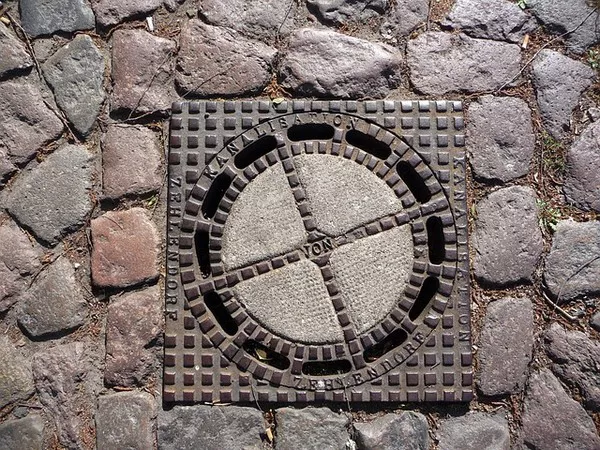Sewage treatment is a critical component of modern urban infrastructure, safeguarding public health and the environment by managing and treating wastewater before it is discharged into natural water bodies. The treatment process consists of several stages, each designed to remove specific contaminants and impurities. Among these stages, the primary treatment serves as the initial step in the sewage treatment process. In this article, we will delve into the primary stage of sewage treatment, exploring what happens during this crucial process, its significance, and its role in ensuring a sustainable and healthier environment.
The Purpose of Primary Treatment
The primary treatment stage plays a pivotal role in wastewater treatment, as it sets the foundation for subsequent processes. Its primary purpose is to physically separate solid and floatable materials from the incoming sewage, significantly reducing the overall pollutant load in the wastewater. This separation process is achieved through a combination of physical and mechanical means, making it an essential first step in the treatment process.
The Primary Treatment Process
1. Screening
The primary treatment process commences with the screening of incoming wastewater. Large objects, such as sticks, leaves, and plastics, are removed through the use of bar screens or mechanical screens. These screens trap the larger debris, preventing them from entering the treatment system and causing damage to downstream equipment.
2. Grit Removal
After screening, the wastewater undergoes grit removal. In this phase, the water flow is slowed down, allowing sand, gravel, and other heavy, dense particles to settle at the bottom of a chamber. These materials are then mechanically or manually removed to prevent abrasion and damage to pumps and other equipment further along in the treatment process.
3. Primary Sedimentation
One of the most critical steps in the primary treatment process is primary sedimentation. In this stage, the wastewater is directed to a large, shallow tank where it remains for an extended period, typically several hours. During this time, the force of gravity causes suspended solids, like organic matter and other debris, to settle to the bottom of the tank. The resultant sludge, rich in organic content, is scraped from the tank’s floor and collected for further treatment or disposal.
The clarified liquid, which has undergone a significant reduction in solids content, exits the sedimentation tank and flows into the secondary treatment stage. The primary sedimentation process typically removes around 30-40% of the suspended solids in the wastewater, representing a substantial reduction in the pollutant load.
4. Skimming
In addition to solids removal, the primary treatment stage includes skimming, a process that addresses the removal of fats, oils, and grease (FOG) from the wastewater’s surface. To accomplish this, skimming equipment such as skimmers or rotary drum screens is used. FOG is a common component of sewage due to domestic and industrial sources, and its removal is essential to prevent clogs and blockages in pipes and treatment equipment.
Significance of Primary Treatment
The primary treatment stage may not be as advanced as subsequent treatment stages, such as secondary or tertiary treatment, but its significance cannot be understated. Here are some key reasons why the primary treatment stage is crucial in the overall sewage treatment process:
Reduction of Pollutant Load: Primary treatment significantly reduces the concentration of suspended solids and other contaminants in wastewater. By removing these solids early in the process, it reduces the load on downstream treatment units and facilitates more efficient and effective treatment.
Protection of Equipment: Removing large debris, grit, and FOG in the primary stage helps protect pumps, pipes, and other treatment equipment from damage and clogging. This not only ensures the longevity of the infrastructure but also reduces maintenance costs.
Enhancing Secondary Treatment: The clarified wastewater from the primary treatment stage is much easier to treat in subsequent stages, such as biological treatment (secondary treatment). Lowering the organic load through primary sedimentation allows for more effective biological processes, leading to better water quality.
Environmental Protection: Primary treatment helps reduce the environmental impact of sewage discharge. By removing a significant portion of solids and contaminants, it lowers the risk of eutrophication and contamination of natural water bodies, ultimately preserving aquatic ecosystems.
Challenges and Limitations
While the primary treatment stage offers substantial benefits, it does have limitations:
Incomplete Removal: Primary treatment is primarily a physical separation process, and it cannot effectively remove dissolved contaminants, nutrients (such as nitrogen and phosphorus), or pathogens. These components must be addressed in subsequent treatment stages.
Sludge Handling: The sludge generated during primary sedimentation contains a high concentration of organic matter. Its proper treatment, disposal, or utilization is essential to prevent environmental harm and ensure compliance with regulations.
Energy Intensive: The primary treatment process can be energy-intensive due to the need for mechanical equipment, such as screens and sedimentation tanks. Energy-efficient technologies and practices can help mitigate this issue.
Conclusion
The primary stage of sewage treatment plays a crucial role in the overall process of wastewater management. By physically separating solid materials and reducing the pollutant load in incoming sewage, primary treatment sets the stage for effective and efficient downstream treatment processes. Its significance lies not only in protecting infrastructure but also in safeguarding the environment and public health. As we continue to address the challenges of urbanization and environmental sustainability, understanding and optimizing the primary treatment stage is paramount in achieving cleaner waterways and a healthier world.

